American salaries 100 years ago compared to now
Have wages improved in the last 100 years?
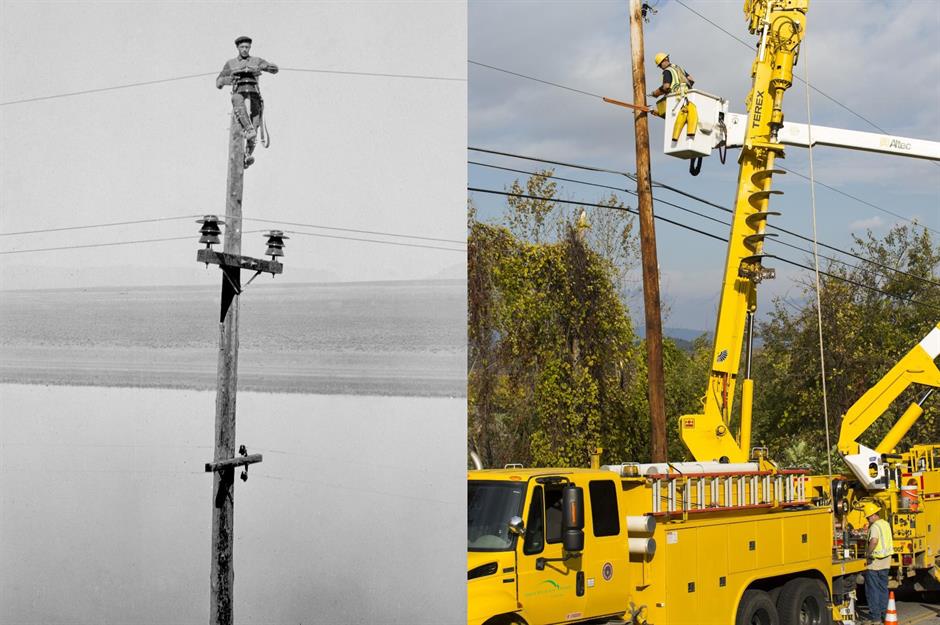
The world has changed a lot in the last century, with ever-developing technologies creating new careers, while rendering others redundant. However, there are some jobs that are as crucial now as they were all those years ago. But how have the salaries they pay changed? Click or scroll through 20 of America's oldest jobs to discover how salaries in 1921 compare to today, with historical figures calculated to reflect inflation. Historical data is taken from the Bureau of Labor Statistics’ Union Scale of Wages and Hours of Labor report, while modern salary data is taken from Glassdoor.
Laundry washer (1921): $17,266
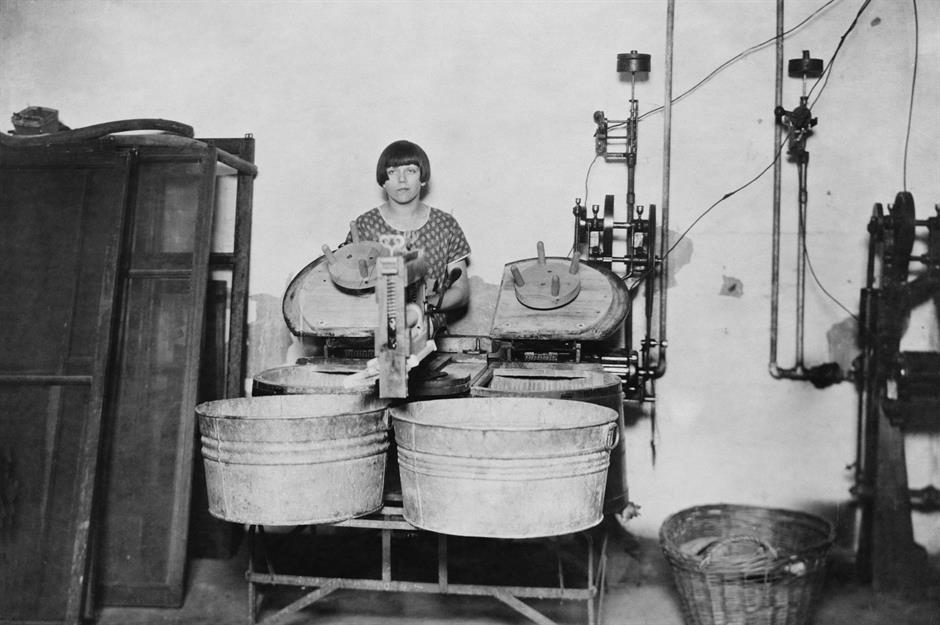
A decade before America’s first laundromat was opened in the 1930s – a “Wash-a-teria” in Fort Worth, Texas – electric wringer clothes washers were the most efficient way to get your laundry done. Operating a washing machine in the 1920s was a risky business, however, as the rotating motor beneath the tub was prone to short-circuiting and causing electric shocks if it got wet. As the years went on, these machines were installed across households in America, replacing the handwashing techniques that had been employed for centuries. In 1921, the average laundry worker would make $1,138 a year, which is equivalent to $17,266 in today’s money.
Laundry washer (2021): $28,000

Today, laundry washers have a whole host of machines at their disposal to help them get the job done. High-tech washing, drying and ironing facilities get through thousands of items a day, and thankfully their safety features have also come a long way. Some laundromats have moved on from just washing clothes too – in Chicago the world’s largest launderette has a total of 301 machines, and in addition to fresh linen the store also offers customers video games, a children’s play area and free pizza and doughnuts. The salary for a laundry washer has also changed with the times – a worker can now expect to earn around $28,000 a year.
Feeder (1921): $24,666
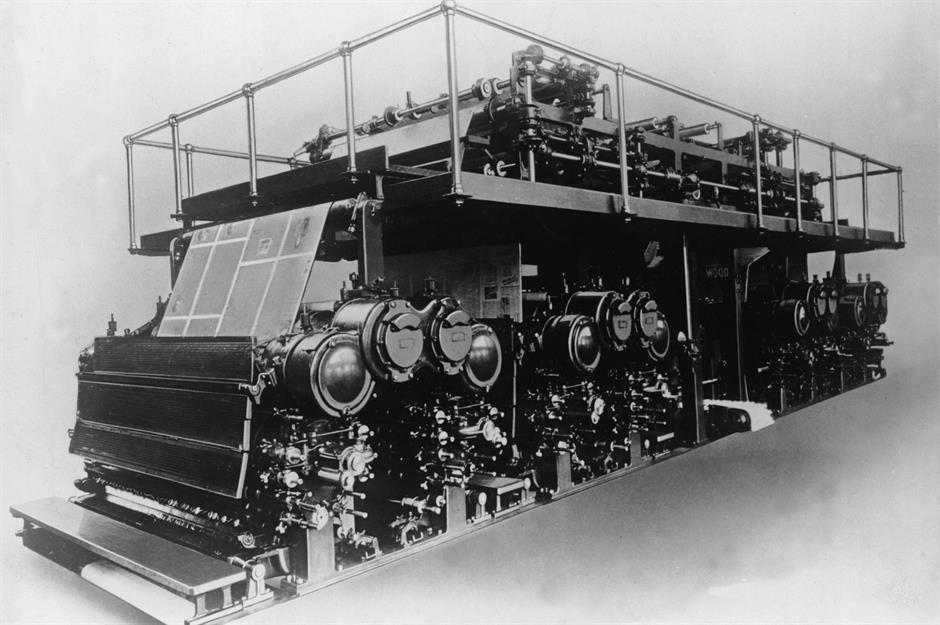
The mass media became popular in the early 20th century, and its fast-growing readership was keen to get its hands on the newest newspapers and magazines. Widespread circulation was possible thanks to printing presses such as these churning out copy after copy, but the mammoth machines required constant tending to and supervision. Somebody employed as a feeder in 1921 would have been paid $1,625 a year for their efforts, which is equivalent to $24,666 in today’s money.
Feeder (2021): $41,000

Newspapers may have been hit hard by the onset of the digital age, but they’re still a huge business – in 2018, weekday newspaper circulation in the US was at around 28.5 million copies. A dominant player in the market is The Wall Street Journal, which distributed an average of 994,600 copies every day last year, according to Press Gazette. Today’s printing presses require a less hands-on approach than the paper-producing machines of the 1920s, but feeder roles still exist. The national average salary for such a role is $41,000.
Truck driver (1921): $24,862
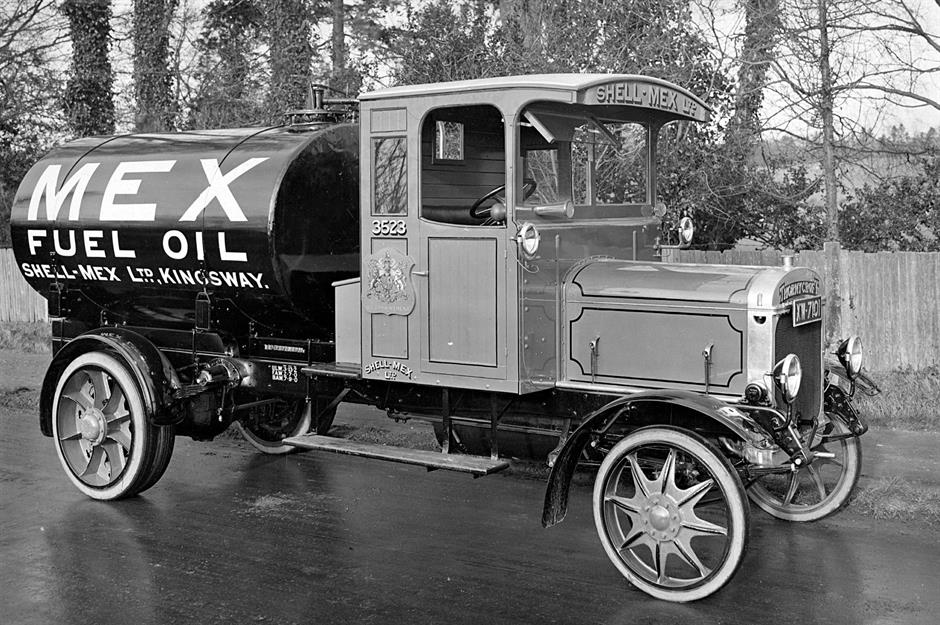
Truck driver (2021): $56,000

The salary of a truck driver has traveled skyward in the last 100 years, with the average salary now sitting at around $56,000 – but some companies are offering their employees a whole lot more than that. There is a serious shortage of truckers in the US right now, and in May trucking company Sisu Energy announced that it would be paying workers an astounding $14,000 per week, which is equivalent to $728,000 per year. The story was sensationalized and didn’t factor in that employees would be covering expenses with that salary too, but it goes to show that there are big bucks in trucking in 2021.
Milk deliverer (1921): $25,502
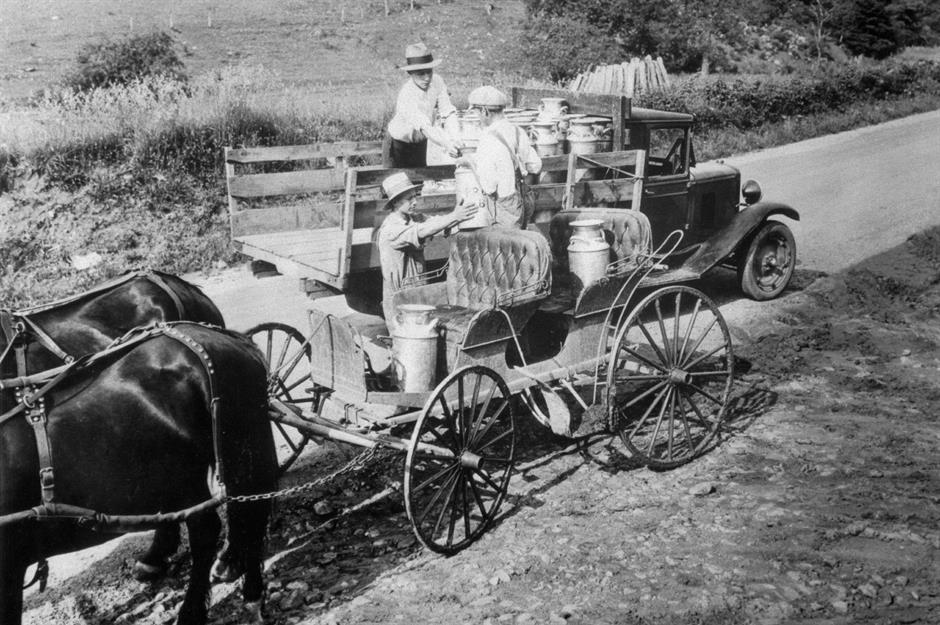
The first home milk deliveries took place in Vermont in 1785, and soon having milk delivered into whatever container you could offer the milkman to pour it into became commonplace. Refrigerators were yet to be invented and so daily fresh milk deliveries were essential unless you were happy to drink spoiled dairy products. Deliveries became easier after the glass milk bottle was patented back in 1878, and the white stuff was sold and delivered in bottles from the following year. By the 1920s getting milk delivered to your front door had become a generations-old norm and the milk delivery person was a key figure in the local community. In 1921 a milk deliverer would earn around $1,680 each year, which is equivalent to $25,502 today.
Milk deliverer (2021): $51,000

The popularity of milk delivery started to wane over the next couple of decades as more and more stores and households got their own refrigerators, and it became somewhat of a dying trade. America’s milkmen and women have seen a resurgence recently however, thanks to COVID-19 restrictions preventing people from going to stores. One family dairy farm in New York, King Brothers, saw its deliveries double after the Big Apple went into lockdown in March last year. Today’s milk deliverers can expect an annual salary of around $51,000.
Car mechanic (1921): $28,098
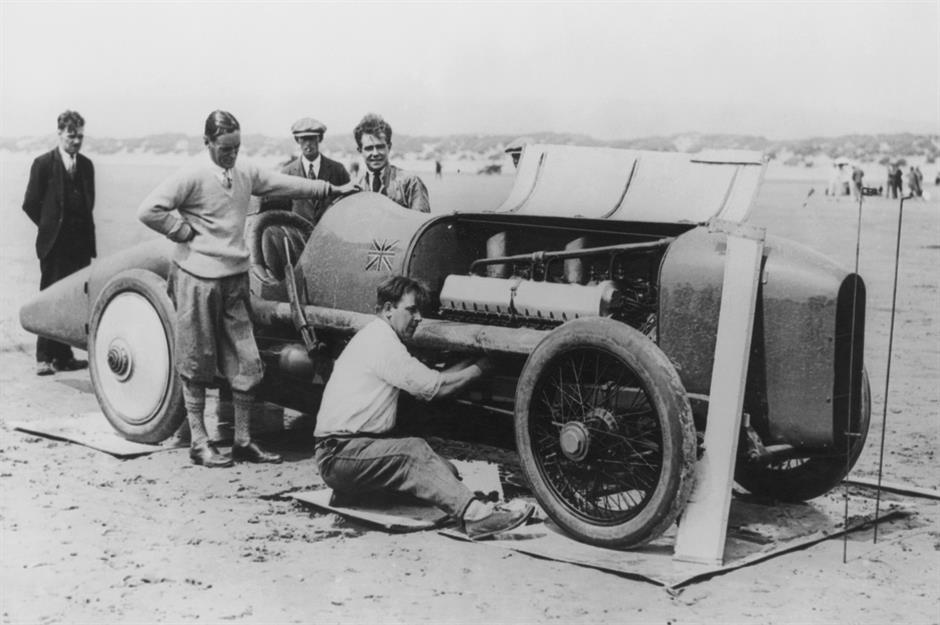
The 1920s were a real turning point for the auto industry and cars with gasoline engines were becoming ever more popular among the masses, which meant a need for more and more mechanics with the know-how to fix them when things went wrong. The Roaring Twenties saw the introduction of iconic models such as this 1920 Sunbeam, which was driven by motorist and journalist Major Sir Malcolm Campbell (pictured). The average car mechanic was on an annual salary of around $1,851, which is equivalent to $28,098 today.
Car mechanic (2021): $39,000

Cars, and the knowledge needed to repair them, have changed a lot since 1921. Whether it’s for old family SUVs, brand-new electric hybrid cars or record-breaking vehicles racing around Formula 1 tracks, mechanics are in high demand. In fact, it’s predicted there will be 46,000 unfulfilled auto technician roles by 2026, according to the US Bureau of Labor Statistics, as the workforce is straining under the weight of the industry that brings 17 million new cars to the US market every year. Salaries vary depending on technical expertise, but on average a car mechanic can expect to earn around $39,000 in 2021.
Cargo handler (1921): $28,296
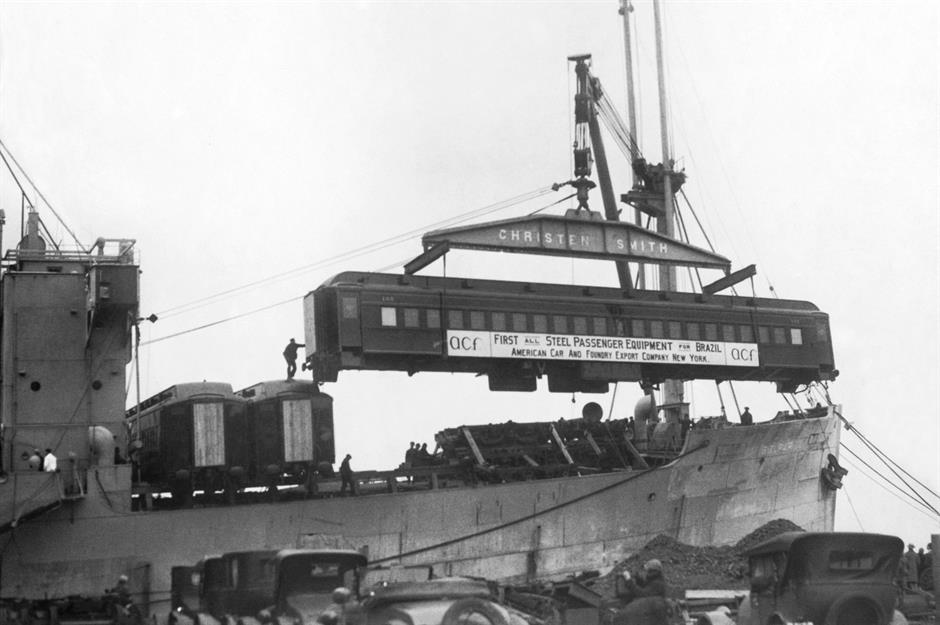
Transporting goods by ship, aircraft or motor vehicle has long been a lucrative business as individual towns, cities and states sought to export their finest wares to the rest of America and beyond. These forms of transport were far more efficient than the horses and carts that had dominated for so long, and workers were trained according to their mode of transport, as well as the types of goods they were transporting. Cargo handlers in 1921 earned an annual salary of $1,869, which is equivalent to $28,286 today.
Cargo handler (2021): $33,000

The cargo industry has never been busier, and even more businesses have pivoted to offer cargo-transport services during the pandemic when traveler numbers nosedived. In March 2020, American Airlines launched cargo-only routes for the first time in 36 years and its workers went from stacking suitcases to filling planes with everything from PPE to live animals. Today’s cargo handlers earn an average salary of $33,000 each year.
Book binder (1921): $30,106
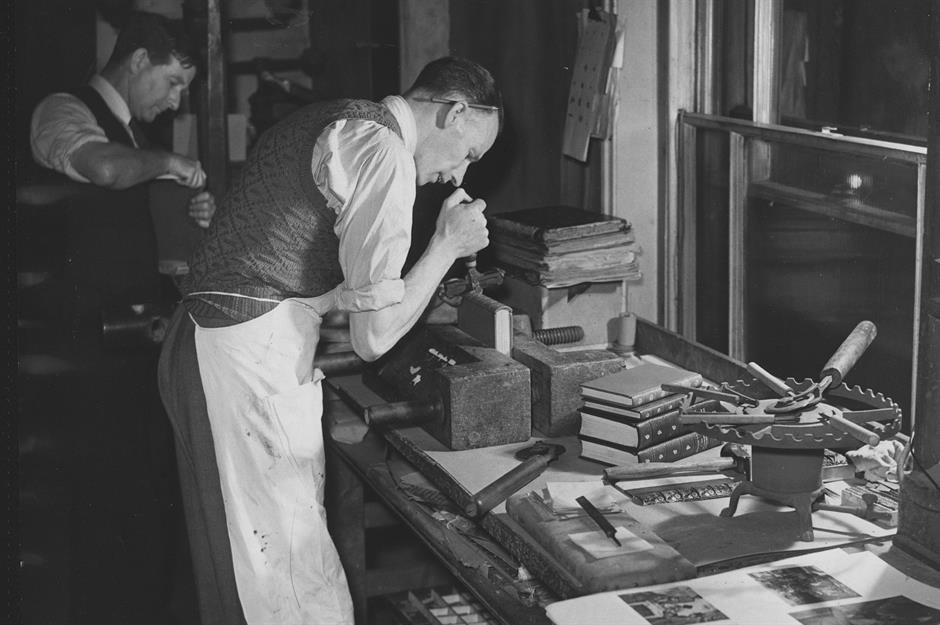
Book binder (2021): $61,000

Book binding nowadays is twofold: there is the meticulous art of binding books by hand, which follows a technique not dissimilar to how books were put together in the 1920s, and there is mass-production binding courtesy of gigantic factories, which produce most of the hundreds of millions of books bought in the US every year. The specialists behind the former engage in a unique craft and can earn double the pay of their 1921 counterparts, with a salary of around $61,000 per year.
Lineman (1921): $30,590
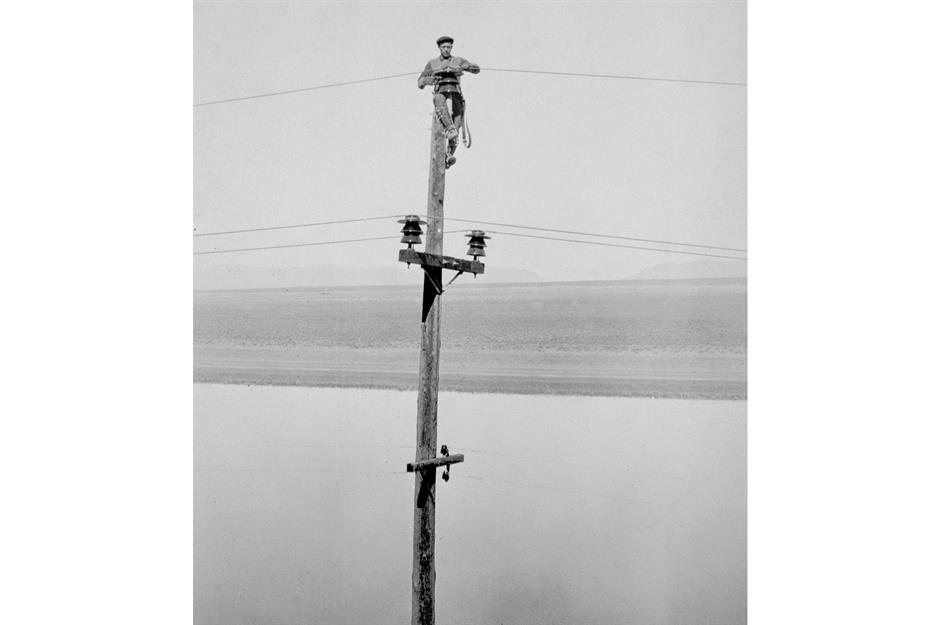
America’s first electrical power transmission line was installed in 1889 and allowed electricity to flow between a generating station at Willamette Falls in Oregon City, Oregon, and downtown Portland. It was around 13 miles in length and its construction was a major technological breakthrough. By 1921, electricity was pivotal in all forms of production and its widespread circulation provided a huge boost to the US economy. By 1929, around 70% of manufacturing was reliant on electricity, which meant that workers were essential to maintain electrical power lines. The typical lineman could expect to earn around $2,015 in a year, which is equal to around $30,590 in today’s money.
Lineman (2021): $46,000
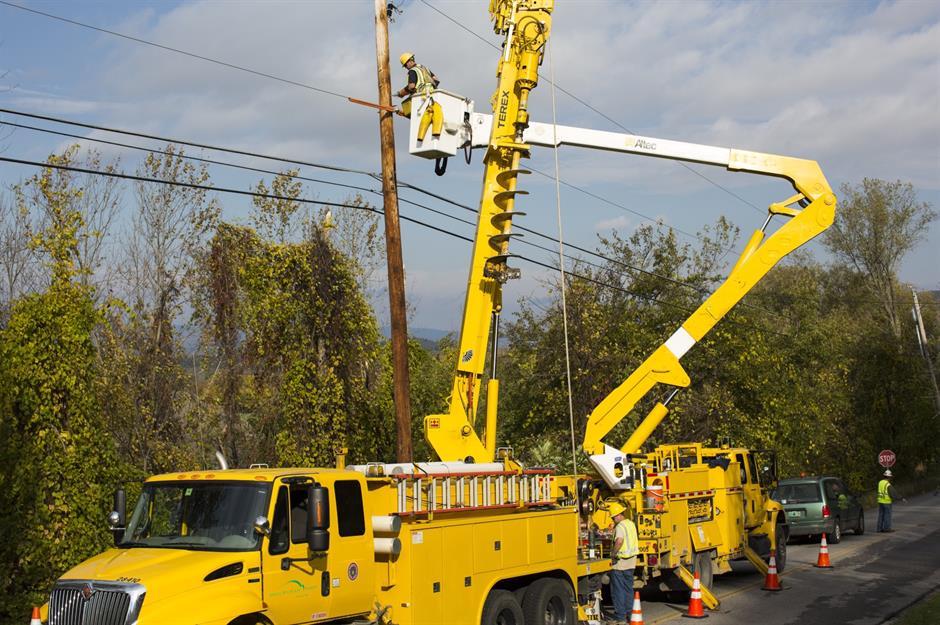
Boilermaker (1921): $31,032
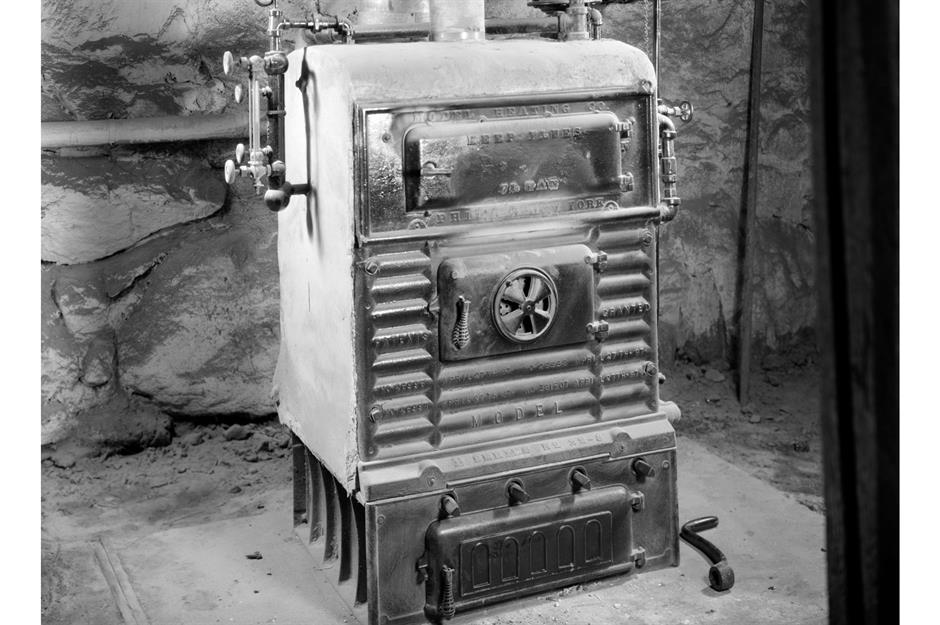
While electricity lit up the world of industry – quite literally – steam power had been a fail-safe means of generating power for centuries. In 1868, an ancestor of the modern-day boiler was born thanks to a painter called Benjamin Maughan, and water storage and heating tanks quickly became all the rage across both commercial settings and American households. Increasing numbers of workers were needed to build these vital appliances, and the average boilermaker could earn around $2,044 a year, which is $31,032 today.
Boilermaker (2021): $26,000

Roofer (1921): $31,285
.jpg)
After World War I, mortgages were easy to come by and real estate was in high demand across America’s cities, particularly in sunny Florida. As home ownership rates soared, construction workers, including roofers, had plenty of work. A key difference between the roofers of 1921 and today is the materials they used. A century ago, a material had come onto the scene that would dominate roof building across the country for decades – asbestos. Advertised as a safe alternative to tin and slate, roofers set about using it to construct swaths of new builds across the US. At the time, a roofer would earn around $2,061 each year, which is equivalent to $31,285 today.
Roofer (2021): $36,852

In the early 1970s, American regulators warned that asbestos could cause serious health problems for those who were exposed to it and several types of the substance have since been banned across the US. More than 50 countries have banned it altogether, but it is still used in roofing across America, as well as in Canada, China, Russia and India. Other materials with a longer – and safer – history than asbestos still used in roofing today include wood, slate, metal and cement. The average roofer salary has increased marginally since 1921, as it currently sits at around $36,852.
Blacksmith (1921): $32,107
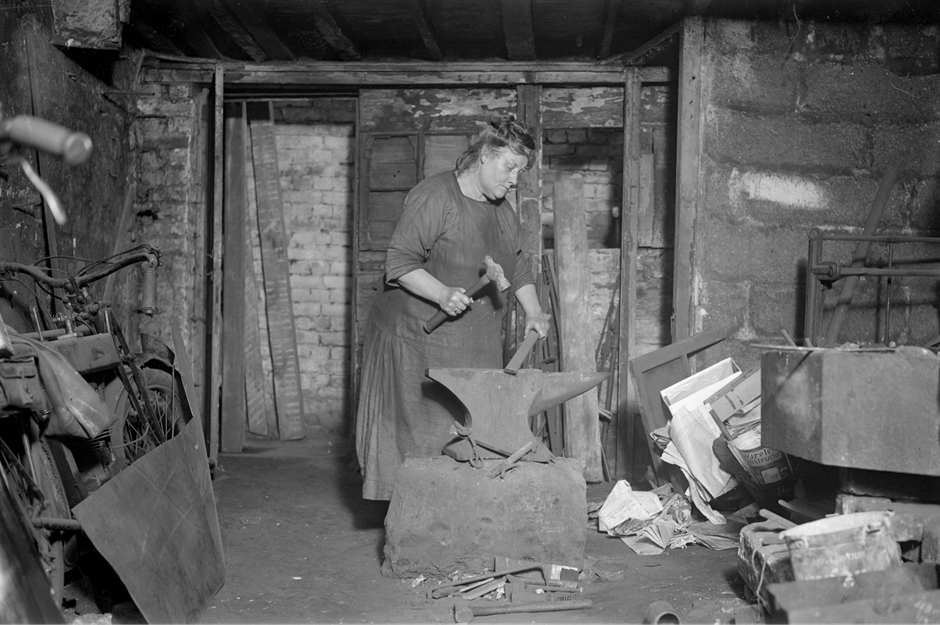
Blacksmithing is a trade as old as time, with its origins stretching back to 1500 BC. The art of the hammer and anvil met its match in the Industrial Revolution however, and many workers were replaced by machinery that could make furniture, tools and horseshoes quicker and at a lower cost. The early 20th century was considered a golden age for blacksmiths as ornamental architecture came into fashion, but it died down again once the Great Depression struck at the end of the 1920s and money became scarce. In 1921, the average blacksmith earned a salary of $2,115, which is equivalent to $32,107 today.
Blacksmith (2021): $52,000
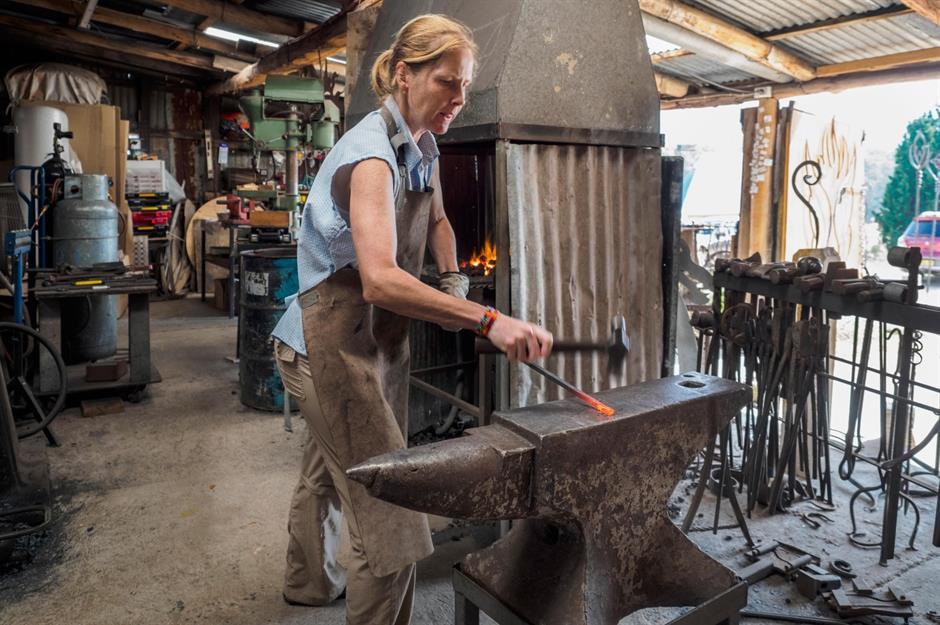
While blacksmith shops are no longer considered a staple of every bustling village and city center, the forging craft lives on in the automotive, construction and power sectors, while decorative, hand-crafted pieces continue to be in high demand. In fact, blacksmithing may not be the dying art some perceive it to be – the Artist-Blacksmith’s Association of North America (ABANA) seeks to uphold the craft’s long history, and it currently has more than 4,000 members, with 300-400 new joiners each year according to its website. While many take on blacksmithing as a hobby, professionals can expect to earn around $52,000 each year.
Stone cutter (1921): $32,631
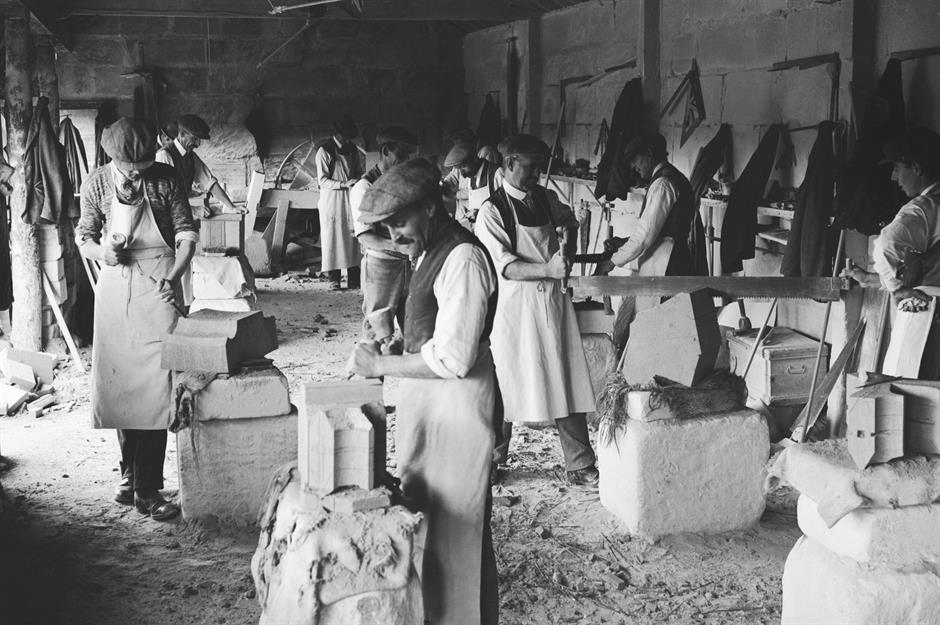
Generations of stone cutters have played a pivotal role in building some of America’s most iconic buildings, including the Washington Monument, which was completed in 1884 and remains the tallest freestanding masonry structure in the city after a 1910 law prevented any taller buildings from being built. One hundred years ago, Art Deco gems such as the Chrysler Building and the Empire State Building were being built, and the stone cutters behind those buildings would have received a salary of around $2,271 – equivalent to $34,472 today – for their work.
Stone cutter (2021): $33,000
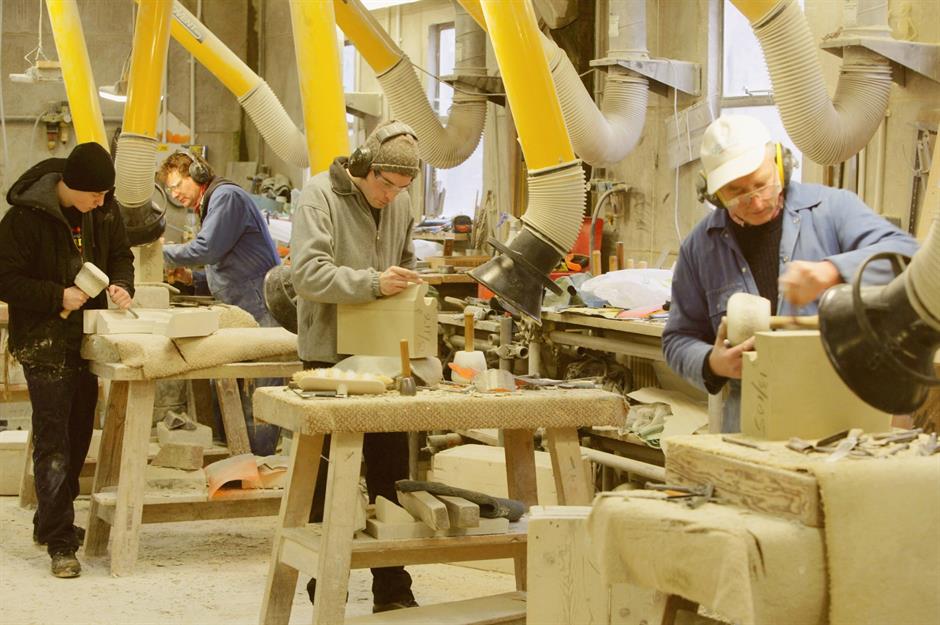
Painter (1921): $33,024
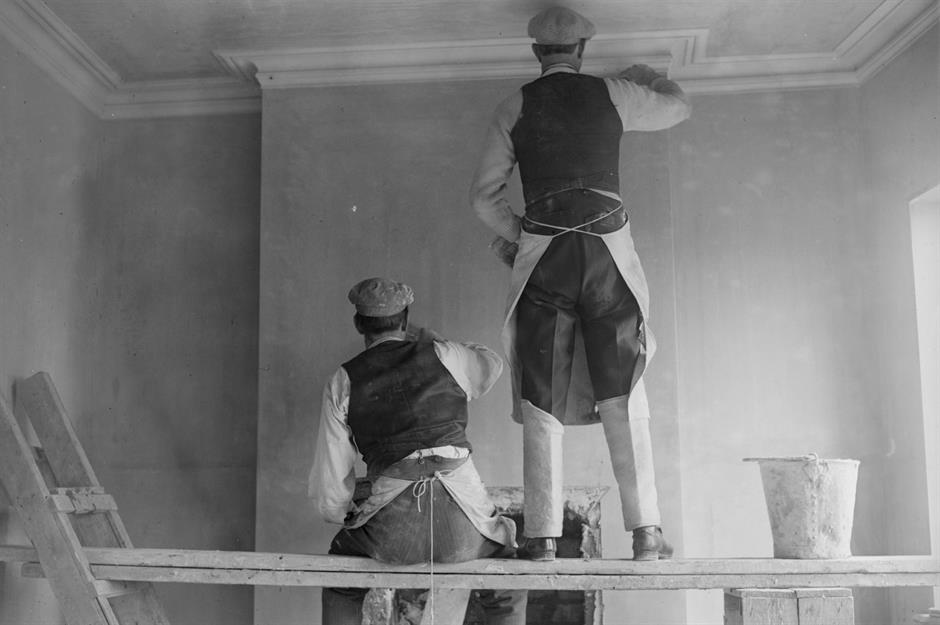
Painter (2021): $39,000

Plenty of Americans still aspire to become painters today and in 2019 more than 375,000 people in the US listed it as their job title, according to data from the Bureau of Labor Statistics. The current average salary for a painter in the US, across construction to decorators to fine art, is $39,000.
Plumber (1921): $33,860
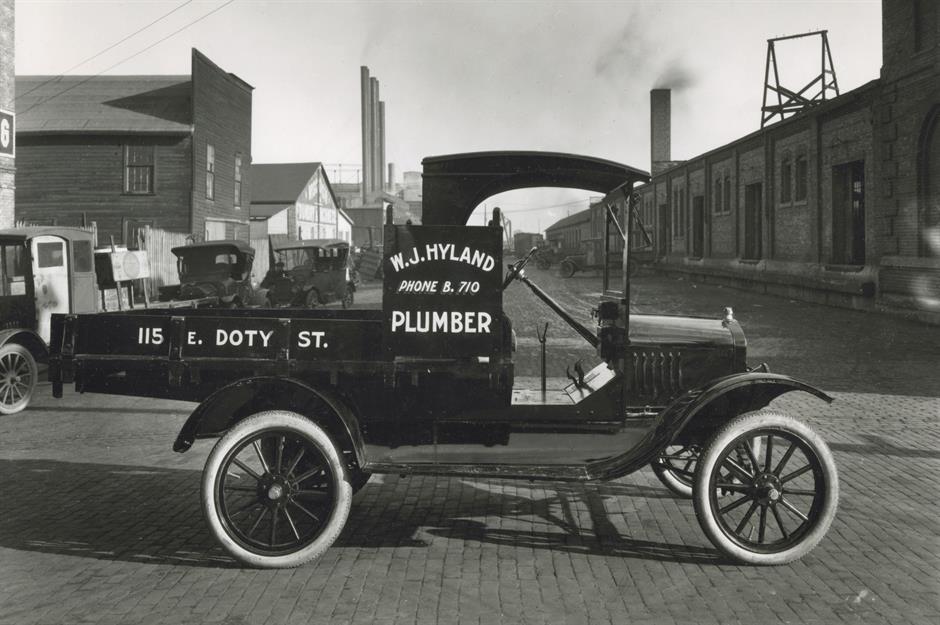
Until the first cast-iron pipe system was installed in Philadelphia in the first decade of the 1800s, wooden log pipes were the default method for transporting water around America. The Tremont Hotel of Boston became the first hotel to offer guests indoor plumbing in 1829, and the White House followed suit in 1833. Almost 100 years later and flushing toilets and heaters were still somewhat of a novelty, and many parts of America didn’t need plumbers because the systems simply weren’t in place to necessitate them on a large scale. It was only in 1931 that the first standardized plumbing code was introduced for people working in the industry. In 1921, people who were employed as plumbers would earn $2,231 each year, which is equivalent to $33,860 today.
Plumber (2021): $59,000

Carpenter (1921): $35,826
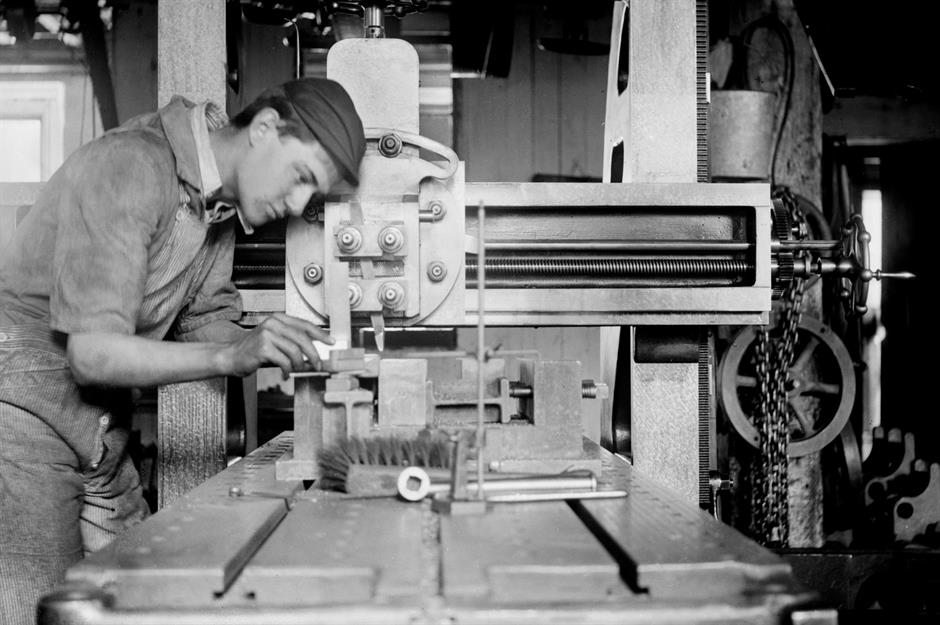
Carpenter (2021): $44,000

Carpenters still provide the essential foundations for America’s modern-day infrastructure, including scaffolding and concreting, as well as crafting more delicate finishing work. Today’s United Brotherhood of Carpenters has more than half a million members across the United States, and the union continues to fight for workers’ job fairness and pay and benefits that can sustain laborers’ families. A carpenter’s salary has seen a small increase since 1921, and it currently sits at around $44,000.
Plasterer (1921): $36,144

The origins of plastering date all the way back to ancient civilizations, but by 1921 a substance called hydrated gypsum had been developed, which reduced the time it took for plaster to dry from several days to just a couple of hours. This new means of plastering was then employed throughout the Art Deco period and beyond to create intricate interior and exterior designs. In 1921, a plasterer could expect to receive a salary of around $2,379 per year, which is equivalent to $36,114 in today’s money.
Plasterer (2021): $59,000

Pattern maker (1921): $39,295
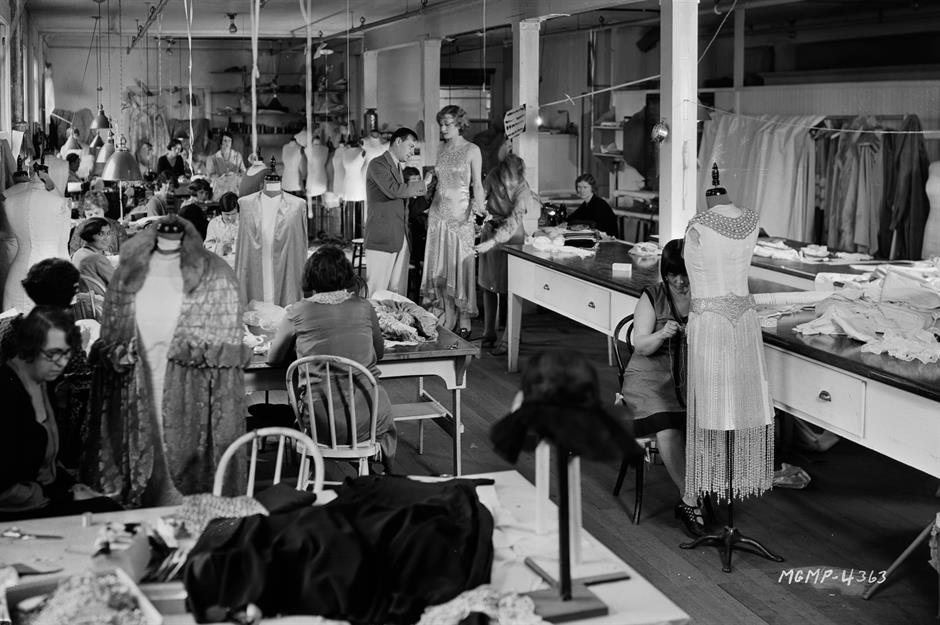
Pattern maker (2021): $63,000

Bricklayer (1921): $40,569
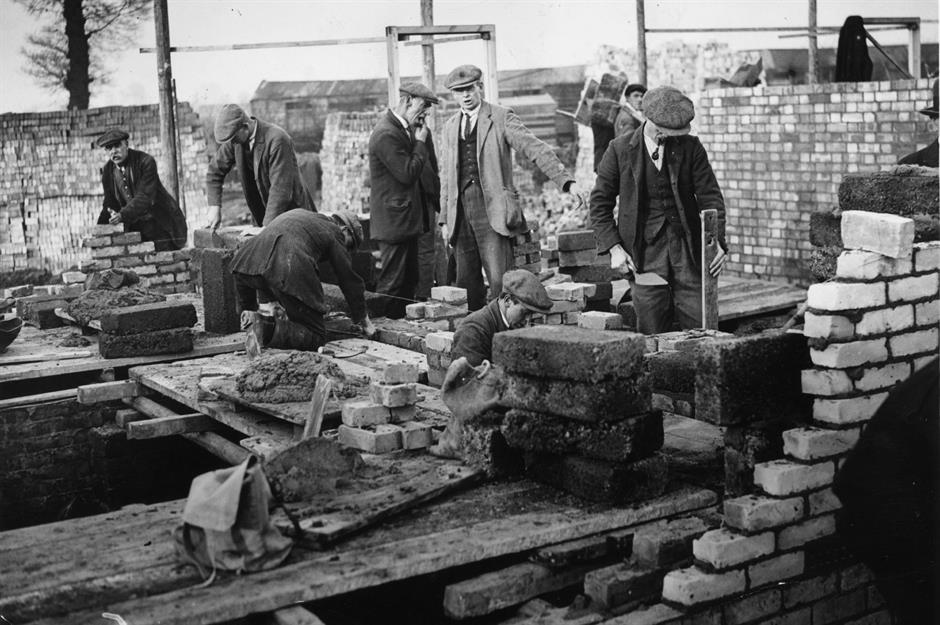
Another job role that spans centuries, bricklayers have quite literally laid the foundations for society as we know it today. Once the Industrial Revolution was in full swing in the mid-19th century, bricks were produced in factories rather than by hand. The average machine was able to churn out around 12,000 bricks a day by 1925, which meant there were ample materials for bricklayers in the post-World War I building boom. A bricklayer employed in 1921 earned an average annual salary of $2,673, which is equivalent to $40,569 today.
Bricklayer (2021): $59,000

The automation of the bricklaying process didn’t stop at the Industrial Revolution, and now there are robots vying to take over the job. In the UK, for example, a robot bricklayer started work on a three-story house last year, with robotics company Construction Automation saying the new machine would increase productivity, build better quality houses and improve health and safety on building sites. But there was also backlash over the threat the new technology posed to those employed in the industry. For now, there are almost 4,000 bricklayers across the US, according to careers site Zippia, and they earn an average salary of $59,000 each year.
Now discover other jobs where robots are replacing humans
Bakery supervisor (1921): $43,853
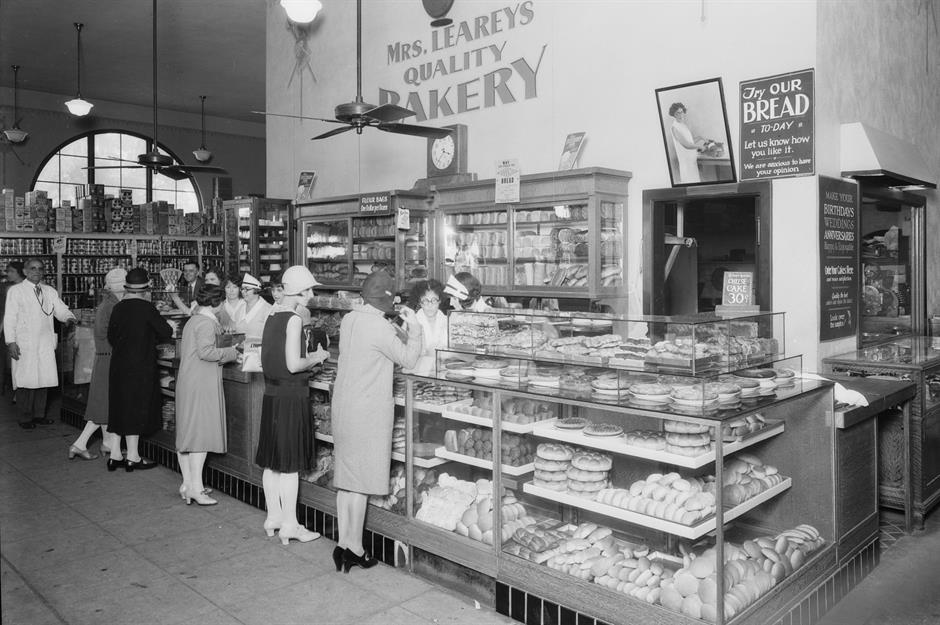
Several factors were at play when it came to shaping the bakery store windows of the 1920s, including the lingering after-effects of the war – applesauce cake for example had ruled supreme when sugar and flour were in short supply – and new inventions revolutionizing the kitchen, such as the bread slicer machine first introduced in Missouri in 1928. The decade also heralded the invention of the pineapple upside down cake and Jell-O-based desserts. Those overseeing the running of bakeries had an average annual salary of $2,889, which is equivalent to $43,853 today.
Bakery supervisor (2021): $35,000

From the Coca-Cola cake to the cronut, America’s bakeries have come up with some weird and wonderful creations in the past century. And the US has also picked up plenty of world records along the way, including the world’s largest bagel, which was produced in New York in 2004 and weighed in at 393.7kg, and the world’s biggest cookie, which totaled 754 square meters of chocolate chip goodness when it was measured in North Carolina in 2003. All bakeries need supervisors, especially those trying to smash world records. Dough afficionados in charge of America’s bakeries can earn a salary of around $35,000 – but that's almost $10,000 less than their 1921 counterparts.
Now discover the minimum wage in every state and DC
Comments
Be the first to comment
Do you want to comment on this article? You need to be signed in for this feature
Most Popular
Features How Michael Jackson's children boost their bank balances